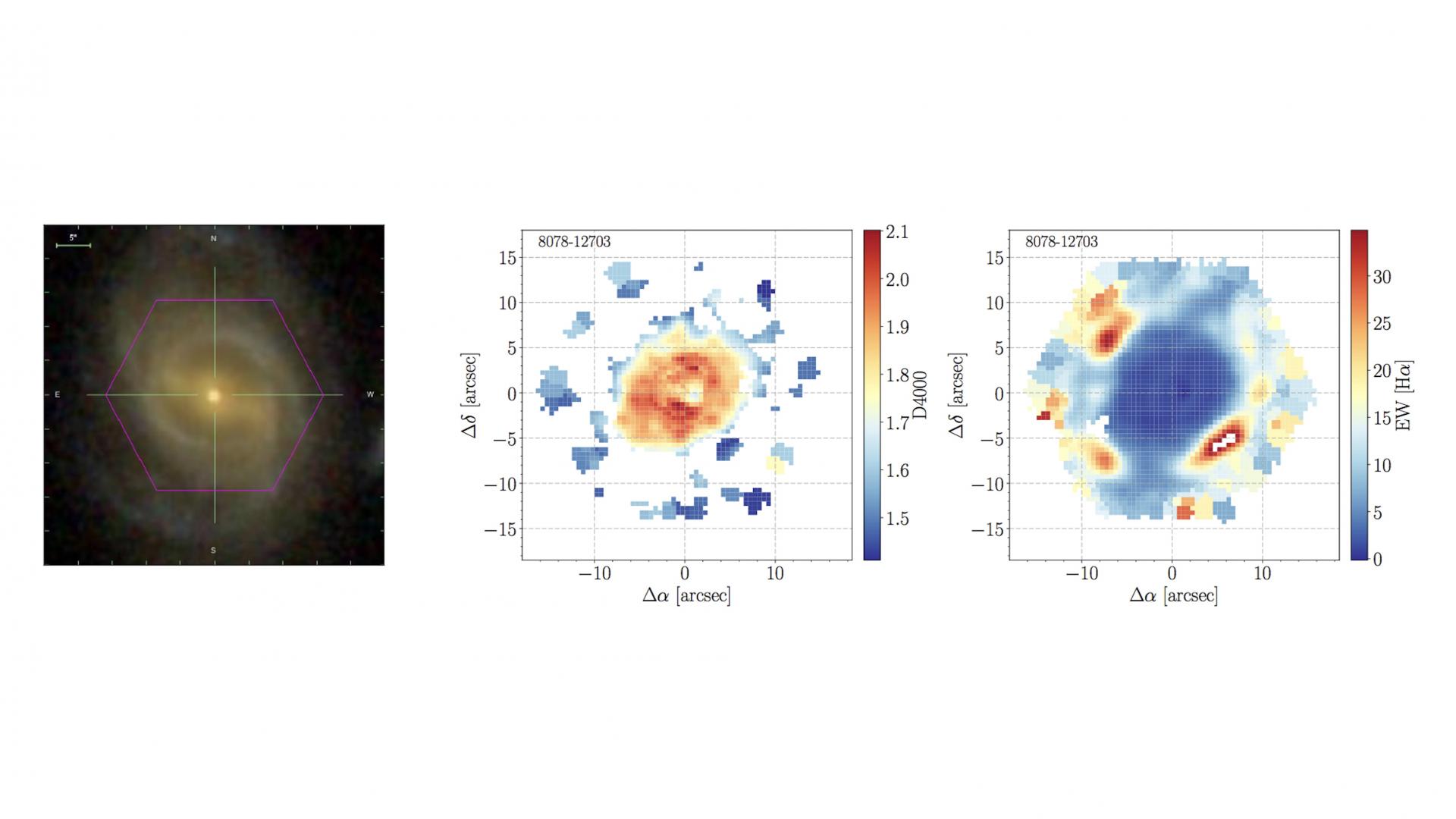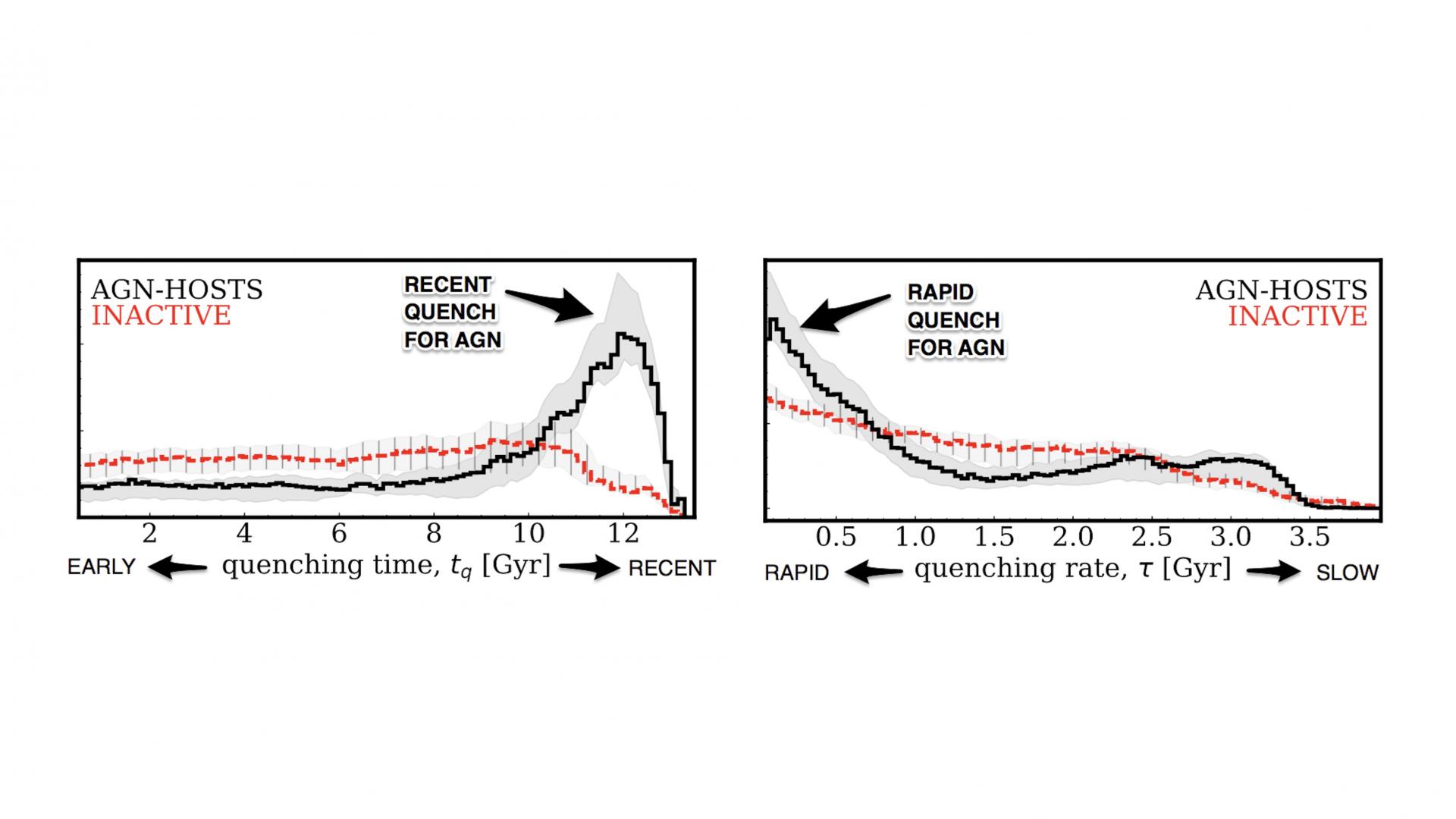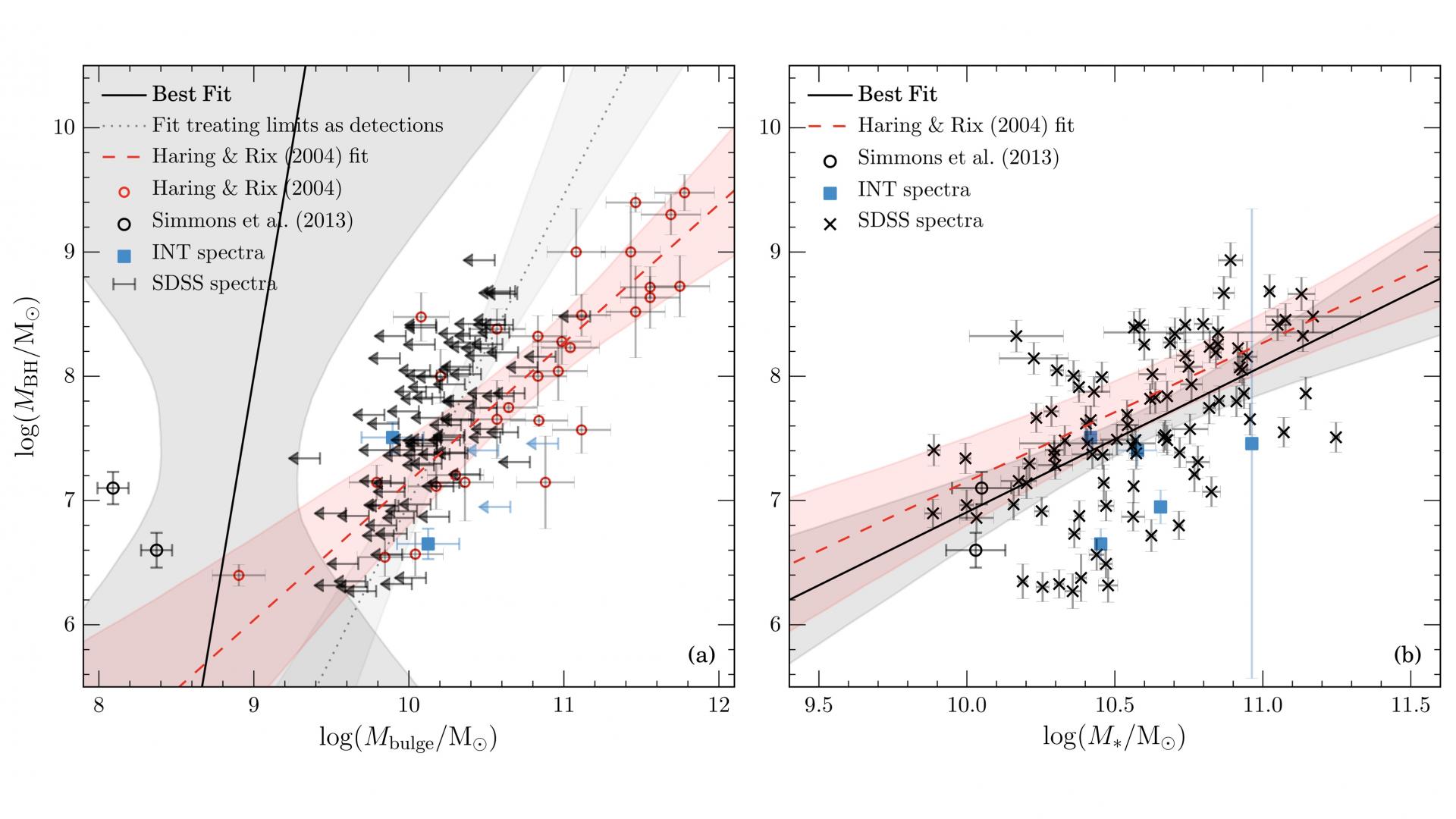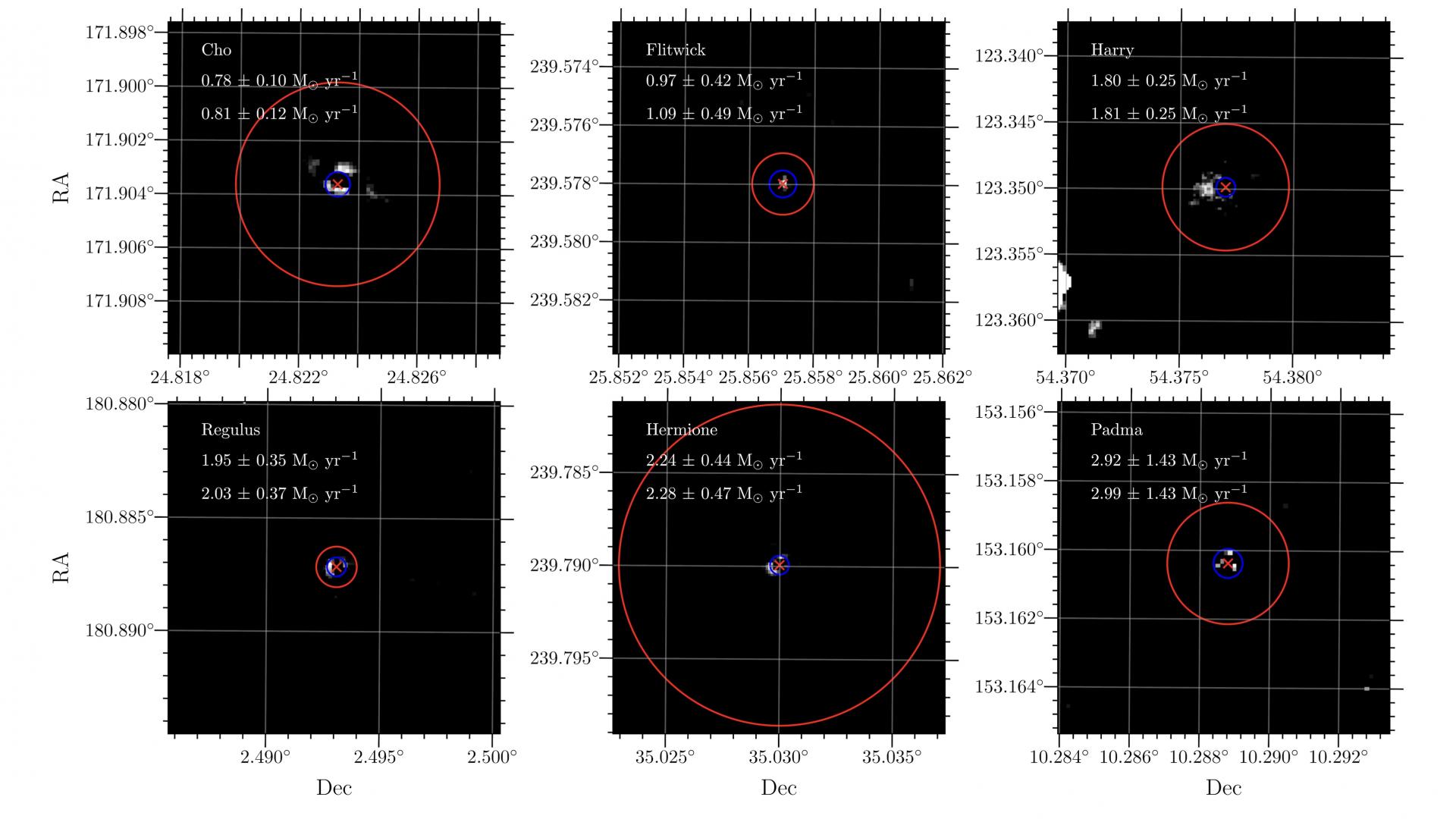My research focusses on the co-evolution of galaxies and their supermassive black holes, in particular the process of quenching whereby galaxies stop forming stars. I wrote a review of the topic in the introduction of Smethurst et al. (2017) which looked at the environmental dependence of quenching. During my current position as research fellow I am focussing on determining whether active galactic nuclei (AGN) cause quenching of star formation in a galaxy due to negative AGN feedback.
I am using the SDSS-IV MaNGA survey data to infer the quenching histories of galaxies hosting AGN (selected using multi-wavelength techniques). The MaNGA survey is an IFU survey which provides spectra in up to 127 mosaic 'spaxels' for each galaxy it targets. Using this spectral data along with my star formation history inference code, SNITCH, will allow me to determine if AGN are the true cause of quenching in galaxies or if their activity is a consequence of another quenching mechanism.

Figure 1: Image of an example target galaxy from SDSS (left) showing the hexagonal fibre bundle coverage (magenta) with corresponding data from the MaNGA survey showing the spectral index D4000 (middle, a tracer of stellar age) and equivalent width of the Hα emission line (right, a tracer of star formation) resolved across the galaxy in each of the spaxels.
This work was inspired by a study I completed in my thesis and now published in Smethurst et al. (2016). Using a star formation history code I developed, STARPY I inferred the global quenching histories of over 1000 AGN host galaxies in the SDSS using their optical and NUV photometry. This work showed that across the AGN host galaxy population, there is a higher likelihood for rapid, recent quenching to have occurred than in a mass matched sample of currently inactive galaxies. Whilst it is tempting to claim that this quenching is caused by AGN feedback, we need the follow-up work with the MaNGA survey data in order to confirm this.

Figure 2: The difference in the time (left) and rate (right) of quenching in nearby galaxies that host AGN (black, solid) compared to galaxies with inactive SMBHs (red, dashed). The plots are normalised so that the areas underneath the curves are equal. The peaks in the black, solid lines show that recent (∼ 12 Gyr left panel), rapid (∼ 0.1 Gyr right panel) quenching is occurring in the AGN host galaxy population, which is not seen in the inactive galaxy population (red dashed lines), suggesting this quenching may be caused by AGN feedback. Adapted from Figures 4 and 5 in Smethurst et al. (2016).
In Figure 2, you can also see that some AGN host galaxies have quenched slowly, with rates that are more consistent with secular, non-violent processes. This highlights another area of my research, highlighting the importance of non-merger processes in the contribution to black hole growth. In Simmons, Smethurst Lintott (2017) we showed that a population of bulgeless galaxies had measured supermassive black hole masses 2 orders of magnitude higher than predicted by the black hole mass - bulge mass relation. However, their black hole masses were as expected given their total stellar mass (see Figure 3). This work was followed up by Martin et al. (2018) who showed that this was also the case when tracing the black hole masses through the merger trees of the Horizon-AGN simulation. Martin et al. (2018) showed that in the Horizon-AGN simulations, 65% of the cumulative mass in SMBHs is grown through non-merger processes.

Figure 3: The SMBH mass against stellar mass of the bulge (upper limits for disk-dominated systems shown by the black arrows; left) and the total stellar mass (right). This plot shows how non-merger processes are able to grow SMBHs to the same masses as those grown in mergers.
This raises the question of what rate gas is inflowed to the centre in systems which have merger-free histories. In Smethurst et al. (2019b) we followed up 12 of these disk-dominated AGN with over-massive SMBHs which showed blue-shifted outflows in [OIII] in their SDSS fibre spectra using the Shane-3m at the Lick Observatory. We calculated the outflow rate and the accretion rate of the black hole to determine a lower limit on the inflow rate of material to the centre of these systems which have not undergone a merger. The average inflow rate was ~ 1 solar mass per year. This work provided further evidence that secular mechanisms were sufficient to fuel SMBH growth.

Figure 3: The reduced narrowband images showing the blueshifted broadened emission in [OIII] for each galaxy. Listed is the name (top), outflow rate measured (middle) and inflow rate calculated (bottom; lower limit, from the addition of the outflow rate and accretion rate of the black hole). Non-merger processes not only fuel supermassive black hole growth, but can also power significant ouflows.
Using STARPY I have also looked at the visual morphological dependence of quenching across a sample of over 126,000 galaxies from the SDSS, published in Smethurst et al. (2015). In this paper I showed that contrary to previous work the Green Valley is NOT a 'red herring'. More recently I have also looked at the kinematic morphology dependence of quenching using STARPY and have found that slow rotators are more likely to quench at a faster rate than fast rotators. This work was undertaken with the MaNGA survey data and has been published in Smethurst et al. (2018).
With my inference code I have been able to study a broad range of different possible quenching mechanisms in order to help understand the bigger picture of galaxy evolution.


